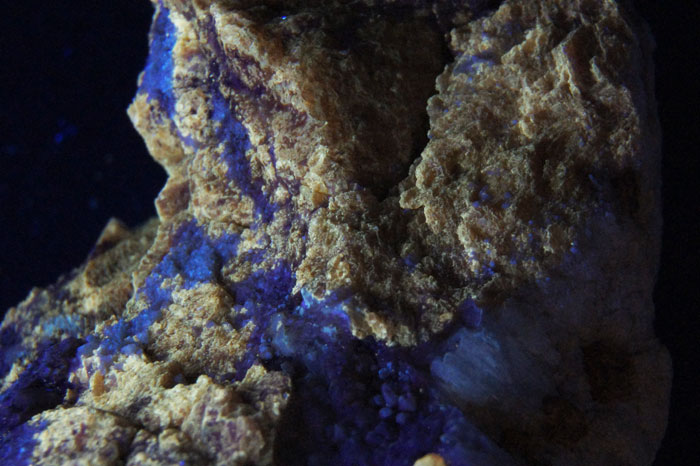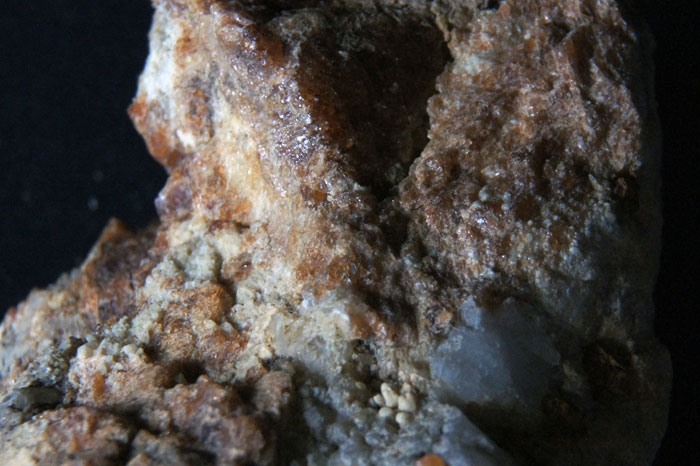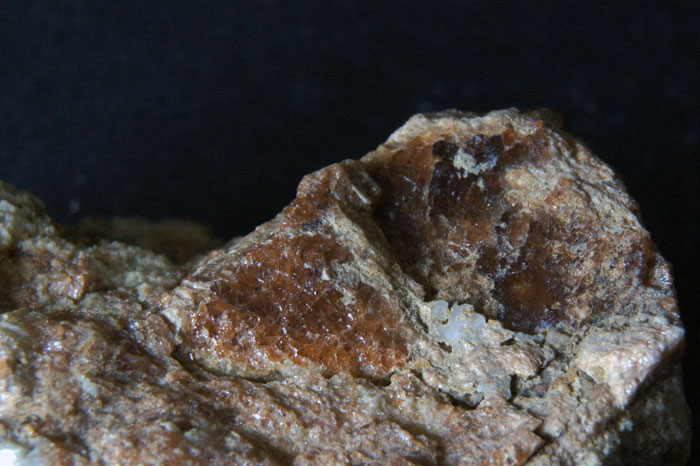Database of luminescent minerals
DRAVITE
Chemical formula: NaMg3Al6(BO3)3Si6O18(OH)4
Family: Silicates
Status: IMA-GP
Crystal system : Rhomboedric
Display mineral: NON
Associated names (luminescent varieties, discredited names, synonyms, etc.): tourmaline,
Luminescence:
Shortwave UV (254nm) colors: |
Orangy yellow , Brownish Green , Yellowish , | ||
Daylight picture

DRAVITE;
Jajarkot District, Bheri Zone, Nepal
Photo and Copyright:
Middleearthminerals.com
Used with permission of the author
Shortwave (254nm) picture

DRAVITE;
Jajarkot District, Bheri Zone, Nepal
UVSW
Photo and Copyright:
Middleearthminerals.com
Used with permission of the author
Pictures Galery:



 ...
...  Go to the galery (11 pictures)
Go to the galery (11 pictures)
Do you have a photo of this mineral you would like to see in the gallery? Contact us!
Phosphorescence (in the common sense of the term) observable with the naked eye:
No data
Activator(s) and spectrum:
No dataNo spectrum yet
Best localities for fluorescence (*):
- Crevola, Italy;
- Moshi, Tanzania;
- Yinniethara, Western Australia, Australia (weak yellow-orange luminescence);
- Kohistan District, Pakistan;
- Jajarkot District, Bheri Zone, Nepal ;
- Pajaru, Jajarkot District, Karnali Pradesh, Nepal;
- Morogoro region of Tanzania (cutted stone moderate to strong yellowish white UV fluorescence);
(*)The data are not exhaustive and are limited to a few remarkable localities for fluorescence
Bibliographic reference for luminescence:
- The Henkel Glossary of Fluorescent Minerals, Dr. Gerhard Henkel, Published by the FMS, 1989 ,
- Fluorescence: Gems and Minerals Under Ultraviolet Light, Manuel Robbins, 1994, Geoscience Press, ISBN 0-945005-13-X ,
- The World of Fluorescent Minerals, Stuart Schneider, Schiffer Publishing, 2006, ISBN 0-7643-2544-2 ,
Reference for luminescence on the Internet:
Images:
Mineralogical reference on the Internet:
 http://www.mindat.org/show.php?name=Dravite
http://www.mindat.org/show.php?name=Dravite
 http://webmineral.com/data/Dravite.shtml
http://webmineral.com/data/Dravite.shtml
Internet Search:
 Image search on 'Google Images'
Image search on 'Google Images'
 Search for documents in all languages on Google
Search for documents in all languages on Google
A request providing no result means only that no such reference exists in the database, but it does not mean that what you are looking for does not exist, just not to our knowledge. If you think you have found an error or omission, please let us know via the contact page being sure to cite the source of information.
